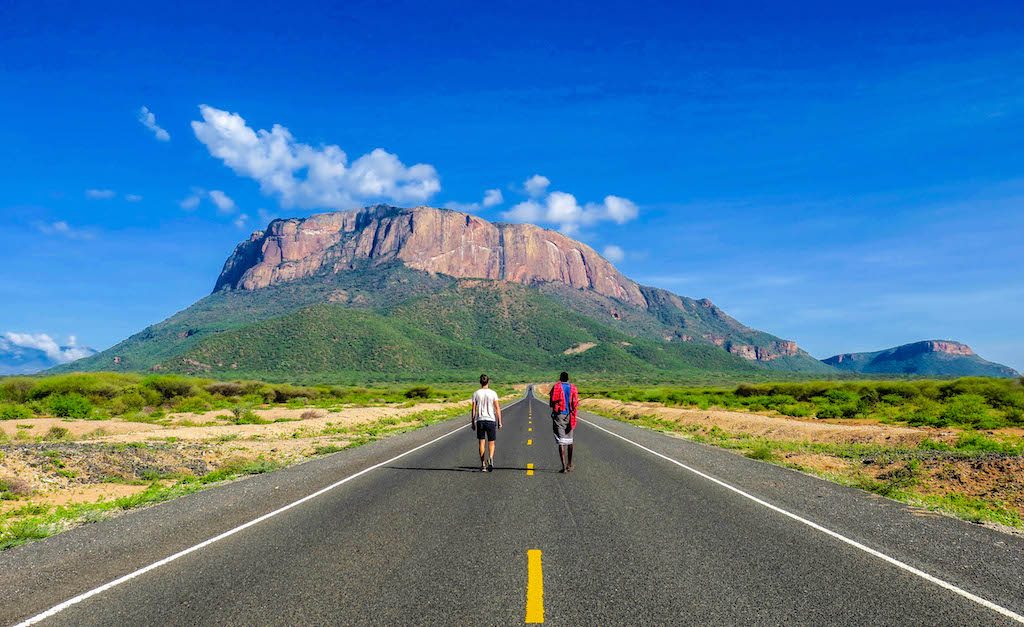Introduction to Northern Kenya
Northern Kenya is a land of unparalleled beauty, where vast arid landscapes meet vibrant cultures and extraordinary wildlife. Stretching across Turkana, Samburu, Isiolo, and Marsabit counties, this region offers a unique blend of adventure, tranquility, and cultural discovery. From stunning national parks and serene lakes to ancient traditions and fascinating geography, Northern Kenya is a destination for those seeking experiences beyond the ordinary.
Cultural Riches
The Northern Kenya region is a melting pot of cultures. Tribes such as the Samburu, Turkana, Rendille, and Borana bring the area to life with their vibrant traditions, intricate beadwork, and fascinating lifestyles. Visitors can immerse themselves in traditional dances, visit nomadic villages, or learn about sustainable practices deeply rooted in this challenging environment.
Isiolo County: A Gateway to the North
Geography & Climate:
Isiolo, often called the "gateway to Northern Kenya," bridges central Kenya with the vast northern territories.
Key Attractions:
- Lewa Wildlife Conservancy: A UNESCO World Heritage Site renowned for its rhino conservation efforts and luxury safari experiences.
- Buffalo Springs & Samburu Reserves: Part of the greater ecosystem, these reserves provide seamless wildlife viewing experiences.
- Maralal Wildlife Sanctuary: A compact sanctuary home to Gravy’s zebra, elands, and rockhoppers.
- Shaba National Reserve: A scenic reserve with rolling savannah and volcanic formations.
- Ngare Ndare Forest: Famous for its canopy walk and waterfalls.
- Isiolo Cultural Heritage Centre: Learn about the diverse cultures of the Borana, Somali, and Meru communities.
People and Culture:
Isiolo is home to a blend of communities, including the Borana, Somali, and Turkana. This diversity makes it a cultural melting pot with colourful festivals and markets.
Climate:
Hot and dry, with temperatures ranging between 20–35°C. Cooler in higher-altitude areas like Ngare Ndare Forest.
Marsabit County: A Mountainous Haven in the Desert
Key Attractions:
- Marsabit National Park: Known for its lush montane forest, crater lakes, and abundant wildlife, including elephants, lions, and leopards. Birdwatchers will revel in spotting over 300 species of birds.
- Chalbi Desert: A striking expanse of white sand and volcanic landscapes, perfect for quad biking, camel safaris, or simply soaking in its otherworldly beauty.
- Lake Paradise: Nestled within Marsabit National Park, this crater lake is an oasis for flamingos and other waterbirds.
- Koobi Fora: A globally significant paleontological site that sheds light on early human evolution.
- Mount Marsabit: A forested volcanic mountain offering incredible hiking opportunities.
People and Culture:
The Rendille, Gabra, and Borana communities call Marsabit home. Their traditional way of life, including camel rearing, is a fascinating aspect of the region.
Climate:
Primarily arid, with occasional rain on the higher slopes of Mount Marsabit. Temperatures can range from 15°C in the cool season to over 35°C in the plains.
Samburu County: The Land of Unique Wildlife
Key Attractions:
- Samburu National Reserve: Famous for its "Samburu Special Five" — the Grevy’s zebra, reticulated giraffe, Somali ostrich, gerenuk, and Beisa oryx. The Big Five also roam here, making it a wildlife enthusiast’s dream.
- Buffalo Springs National Reserve: Adjacent to Samburu, this reserve offers serene landscapes and sightings of the Greater Kudu, Somali ostrich, and crocodiles basking along the riverbanks.
- Shaba National Reserve: A lesser-visited gem offering a tranquil safari experience, home to unique birdlife and iconic wildlife.
- Mount Ololokwe: A sacred mountain ideal for hiking and birdwatching.
- Reteti Elephant Sanctuary: A community-run haven for orphaned elephants.
People and Culture:
The Samburu people, closely related to the Maasai, are semi-nomadic pastoralists with a rich cultural heritage. Traditional dances and beading crafts are a key draw for visitors.
Climate:
Semi-arid, with warm days and cool nights. Rainy seasons are April–May and October–November.
Turkana County: The Cradle of Humankind
Geography & Climate:
Turkana, the northernmost county, features harsh desert landscapes, dramatic volcanic formations, and the vast expanse of Lake Turkana.
Key Attractions:
- Lake Turkana: Known as the "Jade Sea," this world’s largest desert lake captivates with its vibrant blue-green waters and rich biodiversity, including crocodiles and migratory birds. It's a UNESCO World Heritage Site, perfect for fishing, boat rides, and cultural visits.
- Central Island National Park: Located in the middle of Lake Turkana, this park’s three active volcanoes offer surreal landscapes and a chance to spot crocodiles, hippos, and flamingos.
- Loiyangalani Desert Museum: A cultural gem showcasing the heritage of Turkana’s indigenous communities.
- Bongole Crater: A stunning natural wonder within Marsabit National Park, offering breathtaking views and a unique ecosystem.
- Koobi Fora: Known as the "Cradle of Mankind," this site is rich in prehistoric fossils.
- Eliye Springs: A serene resort destination on the shores of Lake Turkana.
People and Culture:
The Turkana people are pastoralists known for their vibrant traditional attire and jewellery. The Turkana Cultural Festival is an annual highlight.
Climate:
Hot and arid, with temperatures averaging 30–40°C. Best visited during cooler months (June–September).
Activities to Indulge In
- Camel Safaris: Traverse the sands on camel-back, guided by experienced trackers for an authentic Northern Kenya adventure.
- Fly Camping: Sleep under the stars in remote, breathtaking locations for an unforgettable wilderness experience.
- Bird Watching: Spot over 400 bird species across the region, from flamingos to rare sunbirds.
- Cultural Immersion: Visit local villages, participate in traditional ceremonies, and learn about daily life from the region’s vibrant communities.
- Game Drives: Explore the reserves and parks to encounter wildlife in their natural habitats.
- Nature Walks and Hikes: From Chalbi Desert to Mt. Kulal, the terrain offers thrilling challenges for hiking enthusiasts.
Why Northern Kenya Safaris Stand Out
- Exclusivity: With fewer tourists, the region offers a serene and intimate safari experience.
- Conservation Efforts: Tourism here supports endangered species and empowers local communities.
- Cultural Richness: Each county boasts unique traditions, languages, and lifestyles that provide a deeply enriching experience.
Challenges to Consider
- Infrastructure: Roads can be rough; 4x4 vehicles are essential for navigating the terrain.
- Extreme Weather: The heat can be intense; pack accordingly and plan for sudden weather changes.
- Safety: While security has improved, travelling with a reliable guide or operator is advisable.
Travel Tips
- Best Time to Visit: June–September for cooler weather and optimal wildlife viewing.
- Accessibility: Regular flights to Lodwar, Isiolo International Airport, and Marsabit Airstrip. Roads are best navigated with 4x4 vehicles.
- Essentials: Lightweight clothing, sunscreen, a hat, and a reusable water bottle.
Plan Your Adventure
Embark on the journey of a lifetime with tailor-made safari packages that include Northern Kenya’s hidden gems. From the wildlife-rich reserves of Samburu to the awe-inspiring landscapes of Turkana, Northern Kenya promises unforgettable memories.
Ready to explore the magic of Northern Kenya? Let us guide you to the heart of this untamed wilderness! Check out our next blog for some itineraries to Northern Kenya



